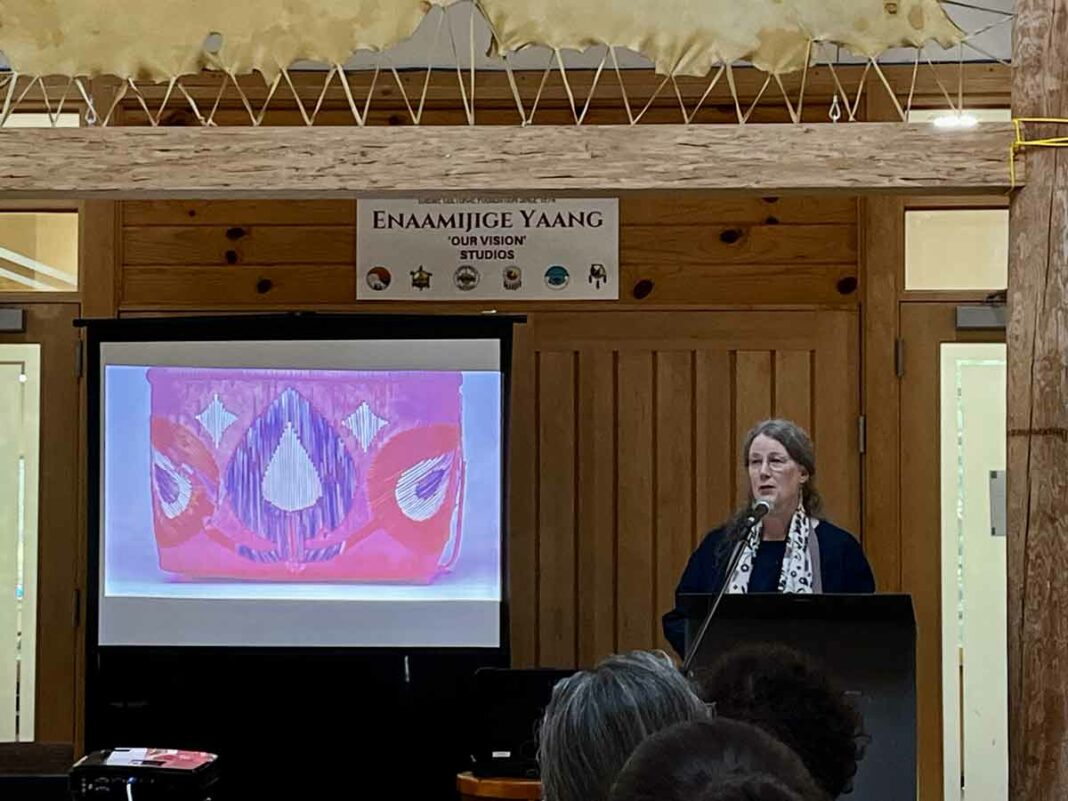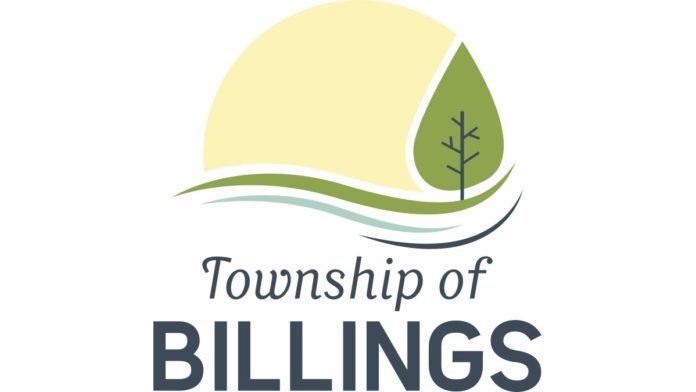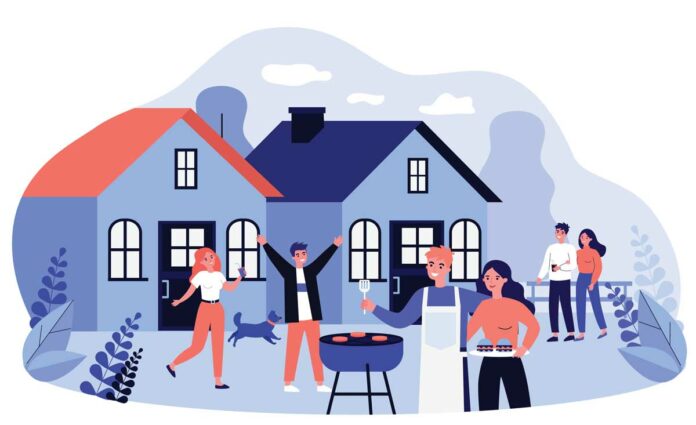M’CHIGEENG—In 1860, the Prince of Wales was on a three-month tour of Canada when he visited what was then known as Rice Lake village (now Hiawatha First Nation), just south of Peterborough. When he returned to England, he took with him a collection of makaks (birch bark baskets). These 13 quilled baskets are currently visiting their ancestral lands as a special exhibition at the Peterborough Museum and Archives (PMA). Dr. Laura Peers explained the significance of this to the The Great Lakes Research Alliance for the Study of Aboriginal Arts and Cultures (GRASAC) Gathering 2023, held this past weekend at the Ojibwe Cultural Foundation in M’Chigeeng.
Dr. Peers is an anthropologist and historian of Indigenous peoples and has worked as curator and consultant. A key thing about these makaks, she explained, is that they were not stolen. “They were intentionally made for presentation in a diplomatic context to the heir of the sovereign to whom the Anishinaabe were allies.”
In 1860, Anishinaabe people had been allies to the Crown for over a century and had fought for the Crown in multiple conflicts. One week after his visit to Rice Lake village, the Prince was petitioned by a group of chiefs at a gathering in Sarnia, who had “bitter” complaints.
“So the makaks were intentionally made and intentionally gifted within this context of ongoing diplomacy with the Crown and also within the context of disappointment with the Crown’s upholding of the treaties,” Dr. Peers said. “As I understand it, within Anishinaabe protocol accepting gifts within a diplomatic relationship constituted acceptance of the responsibilities of the relationship.”
The Prince “absolutely did not understand the political significance either of the gift or his acceptance of the gift.”
The makaks were taken to the Swiss Cottage at Osborne on the Isle of Wight. This was a space created for Queen Victoria’s children to go and experience some of the things brought back from the wider British Empire. “The institution that was caring for them kept a roof over their heads, kept the tags attached to the makaks, but there’s never been any understanding of the political or cultural meaning attached,” Dr. Peers said.
In 2016, Ruth Phillips mentioned this collection to Laurie Beavis (co-curator of the exhibit at PMA), who made the trip to London. Ms. Beavis asked the curator to open the cabinets and “bring these ancestors onto the table to visit,” said Dr. Peers. Ms. Beavis then returned to Hiawatha First Nation and held a seminar with the knowledge holders there, about the collection, the history and “bringing together the fragments of knowledge that still existed in that community, of quillworking and all things related to it.”
After returning to Ontario in 2018, following years of working at the University of Oxford, Dr. Peers learned about Ms. Beavis’ work. She offered to bring her expertise in international loans to help with the project. PMA stepped up and offered to host the collection.
In March 2019, the women attended “the weirdest meeting ever in Buckingham Palace” with members of the Royal Collection Trust, or RCT. “It has significant global expertise in things like European fine art and historic silverware and gilded picture frames and it has no expertise in ethnographic conservation,” said Dr. Peers.
Until 2018, the RCT had never had a curator for all the material from outside the British Isles. “They had just hired this woman when Laurie and I were brought into Buckingham Palace and met with her,” Dr. Peers added. “It was the most wonderful meeting ever, because Laurie got to explain to senior RCT staff that the makaks were not just inanimate objects but were actual spirits, and that the women who made them were ancestors of her community. They just needed to come home for a visit.”
That the women who’d made the makaks were known adds to the importance of the collection. The makaks carry the names of the women who made them. “To have the makers on the makaks is to connect them directly to the descendants in the communities these women came from,” Dr. Peers said.
In any case, the concept of animacy of objects had never occurred to RCT staff. “We were sitting in a room in a wing of Buckingham Palace with gilded picture frames on the walls with pictures of royal ancestors, and I had to explain that yes, it was absolutely standard practice in North America that Indigenous people can make appointments to visit with their ancestors in museums, can pick them up and handle them, can pass them around the circle, can hug them and cry on them and can love them physically,” said Dr. Peers. “After listening to this for a bit, the lady who sat across the table from me looked at the new curator and said, ‘so we normally lend for two months but clearly, if you’re going to work with the community, you’re going to need a longer loan’. They got it! They absolutely got it.”
Once the crates arrived, the makaks were smudged and welcomed home in the language. The next day they were feasted. The baskets are placed in cases in an elongated circle and protocols are in place for community members to visit with these ancestors.
Many communities and organizations have been involved in bringing the ancestors home for a visit: the RCT, Hiawatha First Nation and other Mississagi First Nations, Peterborough Museum and Archives, and the makaks themselves.
“All this work is about different kinds and levels of relationships and alliances, and we’ve tried really hard to honour each component of the alliances and protocols,” said Dr. Peers. “We’re going to need all those relationships as strongly as we can build them as we move into the next phase of the project, that will be planning for when the makaks go back to England.”
The makaks were originally a diplomatic presentation and that diplomacy will be honoured with their return to England. When they go back it will be with interpretive materials, with an Indigenous voice and Indigenous perspectives. “We need to think carefully about how we say farewell to our relatives,” Dr. Peers said. “We thought carefully about how to greet them. I think it’s going to be much harder to say farewell.”
The makak exhibition will continue at the Peterborough Museum and Archives until November 19.





